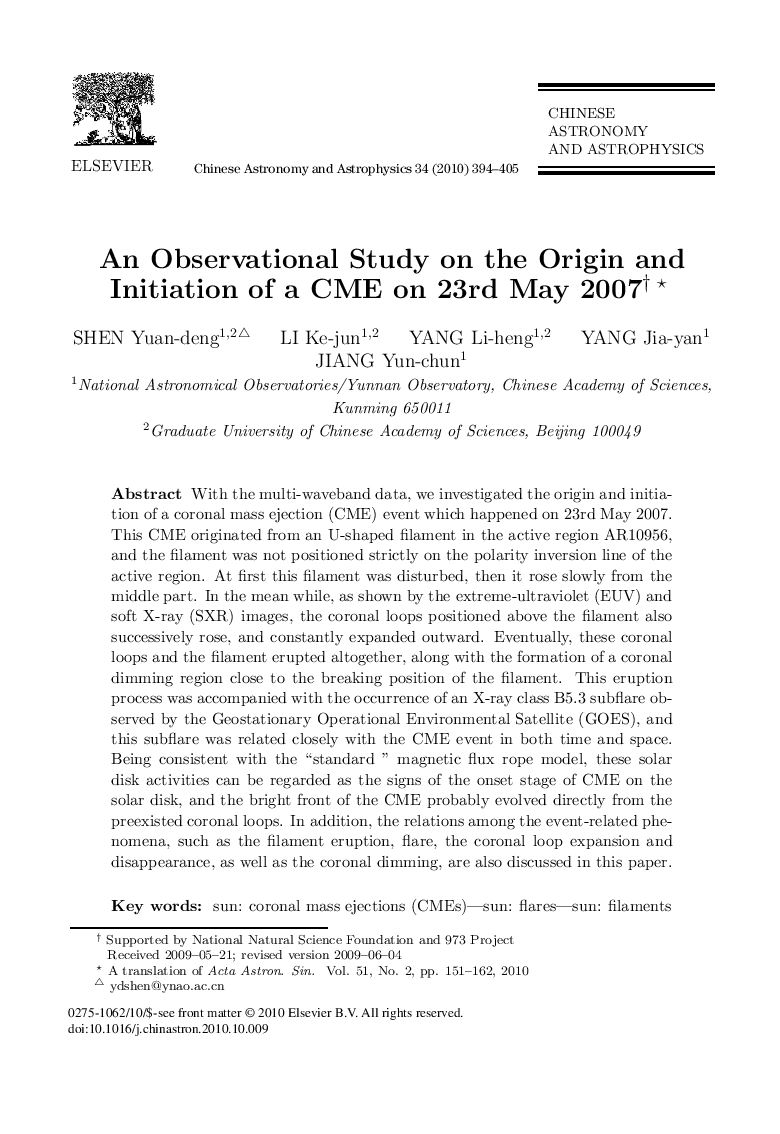| Article ID | Journal | Published Year | Pages | File Type |
|---|---|---|---|---|
| 1772089 | Chinese Astronomy and Astrophysics | 2010 | 12 Pages |
With the multi-waveband data, we investigated the origin and initiation of a coronal mass ejection (CME) event which happened on 23rd May 2007. This CME originated from an U-shaped filament in the active region AR10956, and the filament was not positioned strictly on the polarity inversion line of the active region. At first this filament was disturbed, then it rose slowly from the middle part. In the mean while, as shown by the extreme-ultraviolet (EUV) and soft X-ray (SXR) images, the coronal loops positioned above the filament also successively rose, and constantly expanded outward. Eventually, these coronal loops and the filament erupted altogether, along with the formation of a coronal dimming region close to the breaking position of the filament. This eruption process was accompanied with the occurrence of an X-ray class B5.3 subflare observed by the Geostationary Operational Environmental Satellite (GOES), and this subflare was related closely with the CME event in both time and space. Being consistent with the “standard” magnetic flux rope model, these solar disk activities can be regarded as the signs of the onset stage of CME on the solar disk, and the bright front of the CME probably evolved directly from the preexisted coronal loops. In addition, the relations among the event-related phenomena, such as the filament eruption, flare, the coronal loop expansion and disappearance, as well as the coronal dimming, are also discussed in this paper.
